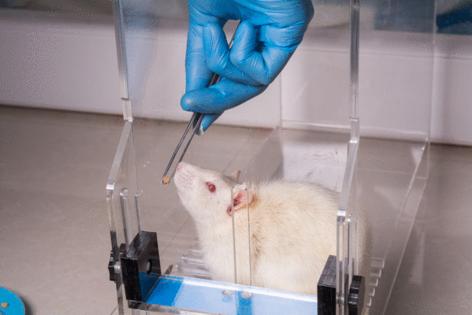F.D. Flam: 'Organs-on-a-chip' is one of many alternatives to animal testing
Published in Op Eds
There’s one area of surprising agreement in the often adversarial relationship between conservatives and the scientific community: the need to phase out animal testing in biomedical research.
The new leaders of both the National Institutes of Health and the Food and Drug Administration have said they plan to reduce their use in federally funded research, continuing an effort started in the Biden administration.
Technology is helping bring about change with advances that allow scientists to create structures from human cells that can mimic our organs. In some contexts, those cells work better for studying diseases and drug side effects than traditional experiments that lead to the deaths of millions of rodents, dogs and primates every year.
The primary argument for using animals in research has been their biological similarity to humans, which allows scientists to observe diseases and treatments that are not easily replicated with other methods. Animal safety testing is sometimes required before human trials can begin.
Traditional opponents of such testing have been animal rights activists and others whom critics have sometimes labeled as anti-science. But raising ethical concerns about such research isn’t anti-science. In fact, failing to acknowledge them ignores what science has shown us about animals’ emotional complexity, including altruism among rodents and evidence that they are sentient and experience pain, suffering and fear just as we do.
We have an ethical imperative to find alternatives.
“If you read through the animal ethics literature, half the citations are to science articles about the structure of animals’ brains,” said Jonathan Kimmelman, a professor of biomedical ethics at McGill University. We don’t allow experiments on prison inmates, for example, even if it would benefit science.
Kimmelman said there’s evidence that some alternatives maintain or even improve the quality of research and save money.
There’s still much work to be done to ensure the alternatives work as well as the traditional methods. Then, more research is needed to standardize and scale them for widespread use. Two of the more promising approaches involve tools known as “organs-on-a-chip” and organoids.
Organs-on-a-chip are miniature devices that use human cells to mimic organs. Harvard bioengineer Donald Ingber and his colleagues demonstrated that cells configured into a liver-on-a-chip, for example, were far better than lab mice in predicting the toxicity of a variety of drugs.
Ingber said these chips are so named because the first ones borrowed miniaturization techniques from the computer chip industry. He is also developing them for the lungs, intestines, lymph nodes and women’s reproductive organs. They can also be modeled to represent infections and tumors — even rare diseases, he said. In 2014, he founded the biotech Emulate Inc. to scale up the technology.
Ingber, founding director of Harvard’s Wyss Institute, said he was ordered to stop work on several projects soon after the Trump administration escalated its attacks on the university for refusing to cede to the president’s demands. He had grants from NASA and the Biomedical Advanced Research and Development Authority to use the chips to study the health effects of radiation on organs. “We were making great progress” before the stop work orders came in, he said.
Lena Smirnova, an assistant professor in engineering and public health at Johns Hopkins Bloomberg School of Public Health, is using human cells configured into structures called organoids. Scientists start with stem cells — usually adult cells that are programmed to revert to an embryonic stage. The cells are prompted to develop into organs. “Even if it’s not an entire organism, they will still better recapitulate certain aspects of human physiology than animals will do,” Smirnova said.
Her lab focuses on the development of brain organoids, which can be created from cells obtained from healthy individuals or those with autism, Alzheimer’s disease, or other conditions. They can mimic not just brain cells but aspects of brain architecture. They’re even figuring out how to simulate learning and memory by using electrical stimulation of the organoids and reading their EEG patterns.
She’s using the technology to answer questions about the effects of pesticides, flame retardants, lead and other heavy metals and environmental hazards on brain development.
Kimmelman, the ethicist, said he thinks the broad agreement on the need to reduce animal testing is similar to the moral evolution that turned workplace sexual harassment from something that was mostly tolerated to unacceptable. As long as this evolution happens gradually and society commits to developing alternatives, the change could eventually improve the quality of science. However, research and development require funding, and now is the time for increased support for science, not less.
_____
This column reflects the personal views of the author and does not necessarily reflect the opinion of the editorial board or Bloomberg LP and its owners.
F.D. Flam is a Bloomberg Opinion columnist covering science. She is host of the “Follow the Science” podcast.
_____
©2025 Bloomberg L.P. Visit bloomberg.com/opinion. Distributed by Tribune Content Agency, LLC.

























































Comments